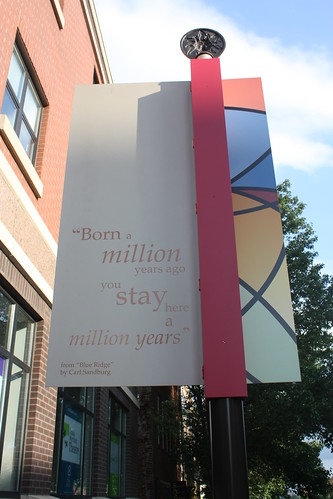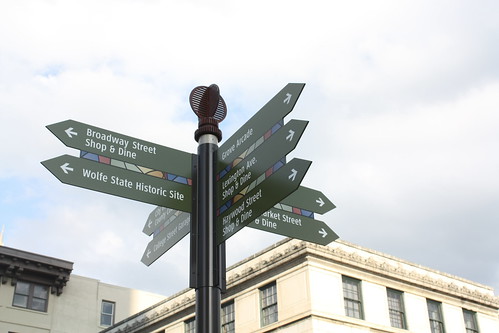Usually wayfinding signs for towns and cities have a little bit of flare to them - something that is unique to or is specific to the city. The City of Asheville takes a different approach to theirs.

This sign is rather bland. Black with white lettering - yes a nice ornamental top, but other than that nothing much to it. However...

...the back of the wayfinding signs is where the real design is showcased. To the right of the pole, a stained glass window like design with numerous colors. To the left, a quote from various notables like Carl Sandburg, Thomas Wolfe, or John Muir, just to name a few. This certainly adds a lot more interest to the sign than directing you to various landmarks.
Asheville also has smaller more pedestrian friendly wayfinding signs - similar to those old crossroad signs with arrows pointing in all directions - at numerous street corners throughout downtown. Like this one in Pack Place:

Asheville certainly found a way to put their own unique personality in their wayfinding signs.

This sign is rather bland. Black with white lettering - yes a nice ornamental top, but other than that nothing much to it. However...

...the back of the wayfinding signs is where the real design is showcased. To the right of the pole, a stained glass window like design with numerous colors. To the left, a quote from various notables like Carl Sandburg, Thomas Wolfe, or John Muir, just to name a few. This certainly adds a lot more interest to the sign than directing you to various landmarks.
Asheville also has smaller more pedestrian friendly wayfinding signs - similar to those old crossroad signs with arrows pointing in all directions - at numerous street corners throughout downtown. Like this one in Pack Place:

Asheville certainly found a way to put their own unique personality in their wayfinding signs.

Comments